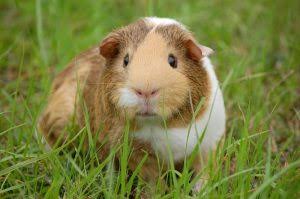Introduction
Quick Navigation
Guinea pigs emanated from the Andes region in South America, with significant origin regions being Peru and Brazil. Their record with humans started up primarily as stock animals.
See here for more details about Guinea pigs
Guinea pigs exist, on average, 6 to 8 years, weigh about two to three pounds, appear in a variety of colours, are very social, and bring in great pets for children and adults likewise. Understand some facts about guinea pigs and what you need to deem before preferring a guinea pig as a pet.
Guinea Pig Breeds
Did you know there is a hairless (bald) species of guinea pig? There are even about a dozen several breeds of guinea pigs like Texel, coronets, Baldwin, and many more, all of which can be classified by their hair or absence thereof.
Cages
Guinea pigs desire a lot more space to run around than most people furnish them with. Large cages can be bought online or in a pet shop, or a tailored courtyard can be built utilising small fencing or pens to provide your cavy lot of space to move around safely. But even if you possess a large cage, do not disregard that your guinea pig will like some moment to wander about freely.
Bedding for Guinea Pigs
Guinea pigs use the bathroom anywhere they like, so you will have to get absorptive bedding but does not hurt your pet. Wood shavings used to be prominent, but more evidence on how they can injure pets has been found over the years, particularly cedar shavings. One significant choice comprises fleece, which can be bought from a craft store and then rinsed and reused when it becomes dirty, and several types of paper-based little animal bedding.
See also for more details
How to mate your guinea pig
Male guinea pigs should be about three to four months of age before being enabled to mate.
A female guinea pig’s oestrus (heat) cycle lingers for 16 days. During this period, she will only be concerned with liaising with the boar for roughly eight hours during this period. Female guinea pigs fetch on quite well with their boar-beaus, so the simplest way to regulate the romance is to leave the couple together until you are convinced, she is pregnant.
Check here references here
Secondly, the other guinea pigs could crush the new-born and wound them, and, thirdly, the sow is more inclined to keep up with her young and protect them if she is not bothered by other guinea pigs.
Care of the new-born pups
The pups should be weaned from the sow at 14 to 28 days when they should have weighed from 150 to 200 grams.
They can be hand trained effortlessly if necessary as they consume solid food in the few days after birth. Nevertheless, usually, a young guinea pig will suckle milk from its mother for approximately three to four weeks. Distinct your new guinea pigs from the mother at the weaning period as it won’t put up with them long to understand the birds and the bees. They will have no hesitancy coupling with their mother or with other guinea pigs in their cottage.
Check also for more information about Guinea pigs
Breeding cavies is a great pleasure, and peeking at the span of colours and coat patterns created is amusing. Be sure, though, that you are not growing without having due affection for the future of the young guinea pigs. Will you be able to locate them good homes?
Conclusion
There is quite a lot to reckon about if you want to nurture guinea pigs. Still, the procedure itself is usually trouble-free as females render respectable mothers and barely hurt or abandon their young. Another good thing is that they usually don’t turn up in vast quantities in rescue centres, so if you breed well, you can do so without bothering that you are likely to augment the amounts of undesirable pests.

